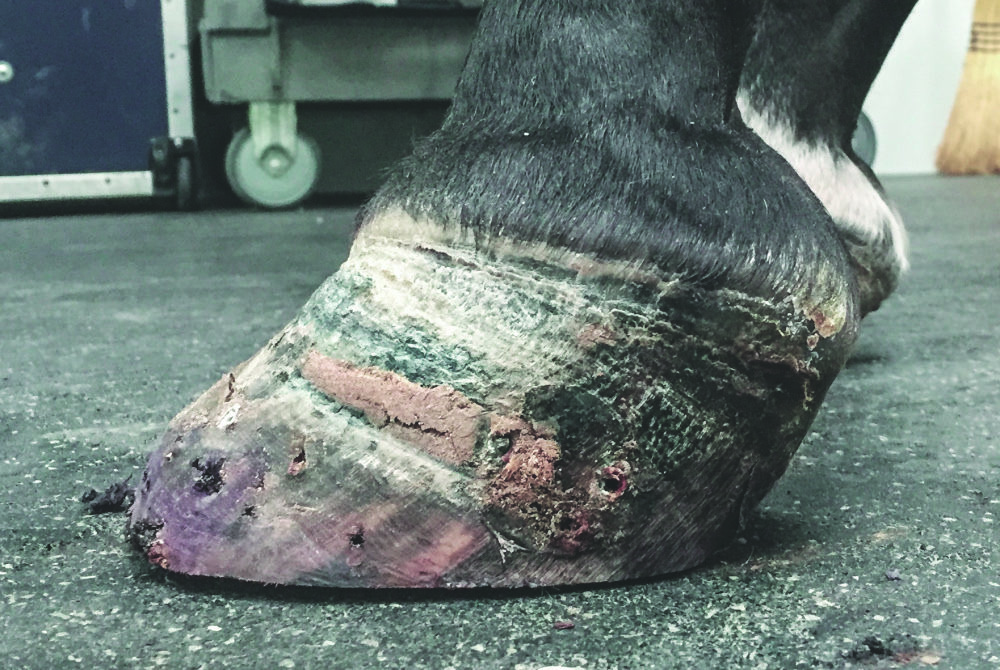American Farriers Journal
American Farriers Journal is the “hands-on” magazine for professional farriers, equine veterinarians and horse care product and service buyers.

White line disease (WLD) is a common hoof disorder, particularly in horses kept in moist or humid environments. While many cases are relatively minor, severe cases can develop that require the expertise of a farrier and veterinarian team.
WLD is a microbial infection of the non-pigmented stratum medium layer of the hoof wall. The infection is a result of a mixed-population of opportunistic bacteria and fungi that are keratinopathogenic and cause the degradation of keratin — a protein that composes the insensitive structures of the hoof. This degradation creates separation and cavities within the layers of the hoof that can span from a few millimeters deep to the entire height of the hoof wall. These microbes are believed to be present in the environment and infect the non-pigmented stratum medium when provided with the appropriate conditions.
Although extremely common in some regions, the majority of cases are relatively mild and can be managed with routine trimming, improved hygiene and topical medications. However, severe cases can develop that result in lameness and extensive damage…